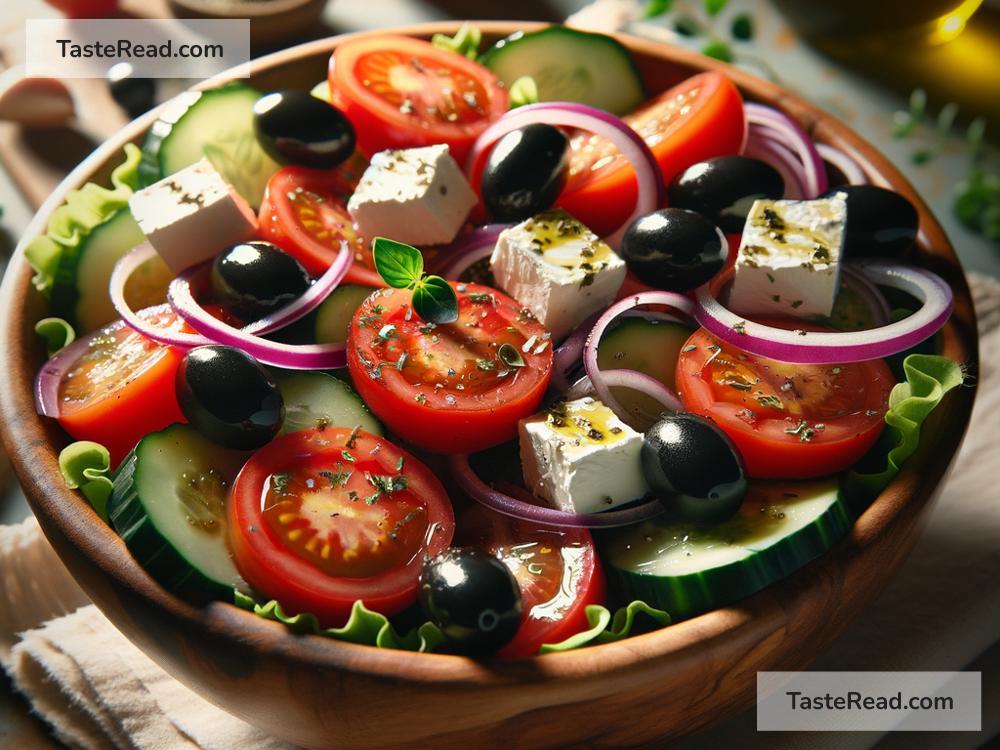How to Create a Classic Greek Salad in Simple English
Greek salad is one of the most loved salads around the world. It is fresh, simple, and full of flavor. Best of all, it’s easy to make, requires no cooking, and uses healthy ingredients. Whether you’re hosting a dinner party, packing lunch for work, or preparing a side dish for your family, classic Greek salad is a delicious choice.
In this blog, we’ll explain step-by-step how to make a classic Greek salad using simple ingredients you can find at your local grocery store. Let’s get started!
Ingredients You’ll Need
Greek salad uses fresh vegetables, olive oil, and a few other common ingredients. Here’s a list of what you need:
- Tomatoes: Choose ripe, juicy tomatoes for the best flavor. Cherry tomatoes or regular tomatoes both work well.
- Cucumber: A fresh cucumber adds crunch to the salad. Persian cucumbers or English cucumbers are great options.
- Red Onion: A red onion is milder than yellow or white onions, and it adds a sharp, delicious bite.
- Bell Pepper: Green bell pepper is traditionally used, but you can use red, yellow, or orange bell peppers for a sweeter, colorful touch.
- Kalamata Olives: These olives are dark, rich, and commonly used in Greek dishes. If you don’t like olives, you can skip this ingredient.
- Feta Cheese: Creamy, salty feta cheese is key to a Greek salad.
- Olive Oil: Use extra virgin olive oil for the best taste.
- Red Wine Vinegar (optional): Adds a tangy kick to the dressing.
- Dried Oregano: This herb gives the salad its authentic Greek flavor.
- Salt and Pepper: Season your salad to taste.
Step-by-Step Instructions
Now that we have the ingredients ready, let’s get started making the salad.
Step 1: Prepare the Vegetables
Start by cleaning the vegetables. Rinse them under cold running water to remove dirt and pesticides.
- Tomatoes: Chop your tomatoes into bite-sized pieces. If you’re using cherry tomatoes, cut them in half.
- Cucumber: Peel the cucumber (optional) and slice it into thin rounds or halve it lengthwise and chop into chunks.
- Red Onion: Peel the onion, then cut it into thin slices or small wedges.
- Bell Pepper: Remove the stem and seeds, then slice it into strips or bite-sized pieces.
Place all the chopped vegetables into a large bowl.
Step 2: Add Kalamata Olives
Once your vegetables are prepped, add a handful of Kalamata olives to the bowl. You can use whole olives or pitted, sliced olives depending on your preference. If you don’t eat olives, feel free to leave this ingredient out.
Step 3: Add Feta Cheese
Classic Greek salad features big chunks of feta cheese rather than crumbled feta. Cut a block of feta cheese into cubes and place it on top of the salad. You don’t have to mix it into the salad yet—it looks nice sitting on top.
If you prefer crumbled feta, that works too!
Step 4: Make the Dressing
The dressing for Greek salad is simple but flavorful, and it’s much healthier than store-bought ones.
To make the dressing:
- Pour a generous amount of extra virgin olive oil into a small bowl or jar.
- Add a splash of red wine vinegar (optional for extra tang).
- Sprinkle in some dried oregano.
- Add a pinch of salt and black pepper to taste.
Whisk the dressing together, or shake it in a jar with a lid. There’s no need for fancy ingredients—the olive oil and oregano are the stars of this dressing.
Step 5: Combine Everything
Drizzle the dressing evenly over the vegetables, olives, and feta cheese. Toss gently with salad tongs or a large spoon to combine the ingredients. Be careful not to break the feta cheese chunks while mixing.
Alternatively, you can leave the feta cheese on top as a garnish and not mix it in. This depends on your personal preference!
Step 6: Serve and Enjoy!
Your classic Greek salad is ready to serve. Transfer it to a large serving dish or individual bowls. Serve the salad immediately or refrigerate it for up to an hour before serving if you prefer it chilled.
Greek salad pairs beautifully with grilled meats, roasted vegetables, pita bread, or even pasta. It’s also perfect as a light, healthy meal on its own!
Tips for the Perfect Greek Salad
- Use the freshest vegetables you can find for the best flavor.
- Choose high-quality olive oil—it makes a big difference.
- Don’t skimp on the feta cheese! A good-quality feta will elevate the salad’s taste.
- Authentic Greek salad does not contain lettuce, so skip it if you want to stay true to tradition.
- Customize the salad by adding herbs like parsley or mint if you like.
Conclusion
Making a classic Greek salad is incredibly simple and rewarding. With just a few fresh ingredients, you can create a healthy and flavorful dish that everyone will love. Whether you enjoy it as a side dish or a main course, Greek salad is sure to bring a taste of the Mediterranean to your table.
Next time you’re craving something light, colorful, and delicious, try making this classic salad. You’ll be surprised at how easy it is—and how quickly it disappears. Enjoy!


